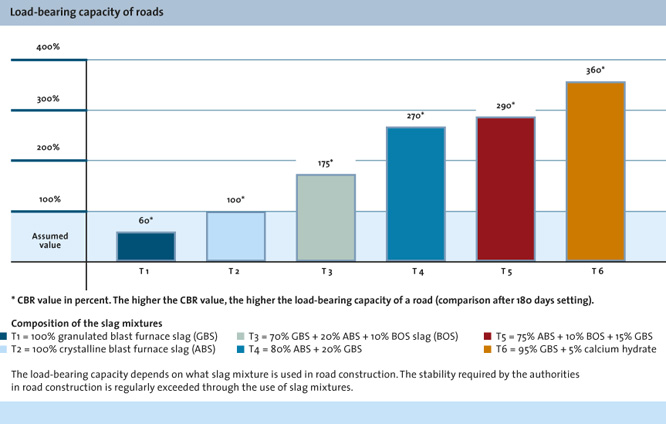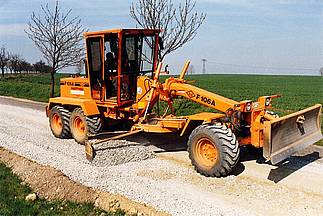Hydraulic bound and semi-bound applications
A special advantage of slag mixtures resides in their hardening by carbonic and/or hydraulic reactions without using a binder like cement or bitumen. This causes an increase in their load-bearing capacity, determined e.g. by an increase of CBR value or compressive strength. Therefore, slag mixtures are often characterised by words like self-hardening, self-binding or self-cementious. Definitions, requirements and test methods of these mixtures under the term "Slag Bound Mixtures" are given in the European harmonised standard: EN 14227 – 2 " Hydraulically bound mixtures - Specifications - Part 2: Slag bound mixtures"
The development of the hardening depends on the components used for composing the slag bound mixture. It can be accelerated by adding e.g. granulated blast furnace slag or steel slag which speeds up the strength development. The figure below shows some examples of different slag bound mixtures, where depending on the components and the composition, different load-bearing capacities have been achieved. As shown in the figure, slag bound mixtures may be combined in many different ways. Producers, processors, designers and users can determine the composition of their mixtures as a function of the availability of the individual types of slag or the desired engineering properties like load-bearing capacity or hardening time.


